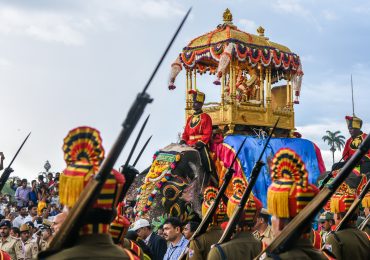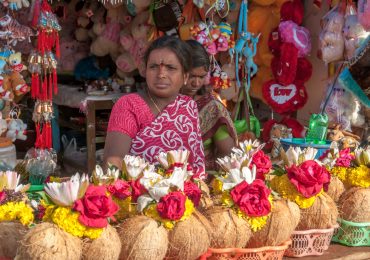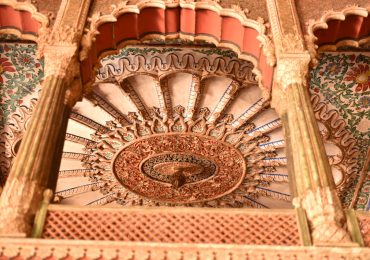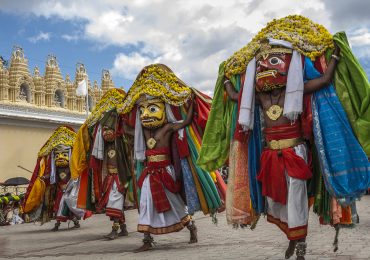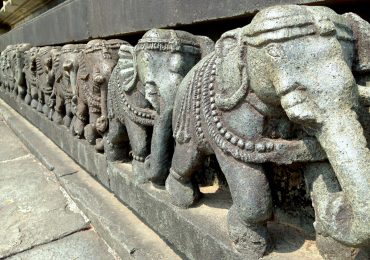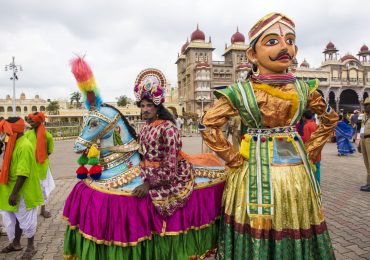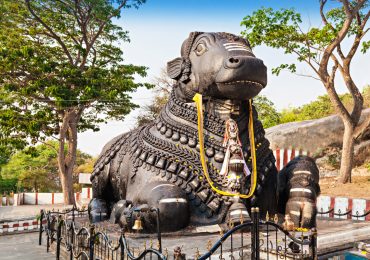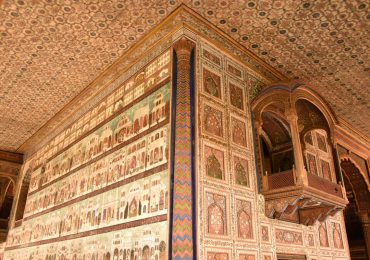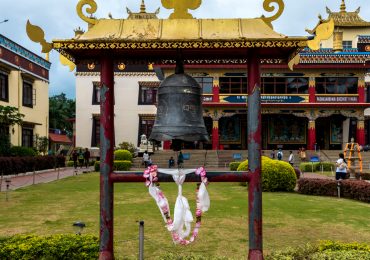Mysore or Mysuru in state of Karnataka in South India was the capital of Maharaja of Wodeyar from 1399 to 1947 AD. This enchanting city is famed for its glittering royal heritage and magnificent monuments and buildings. Its World Heritage–listed palace brings most travellers here, but Mysuru is also rich in tradition, with a deeply atmospheric markets full of spices , flowers and sandalwood and silk.
Photos of : Mysore Palace , Chamundeshwari Temple , Devraja market , Srirangapatna , Cheenakeshava Temple , Bylakuppe Monestary .
Mysore Palace or Amba Vilas, the seat of the Wodeyar Dynasty is perhaps the second most visited sight ( after Taj Mahal ) in India. Grandeur of Indo-Saracenic architecture with stained glass windows, mirrors, carved wooden doors, mosaic floors and a series of paintings depicting life during the Raj , showcase the royal legacy of Wodeyar kingdom. The Palace is lit by using 1,00,000 bulbs on every Sunday and festivals.
Chamundeshwari Temple atop a hill of 1062 meter was built during 12th century AD has has Hoysala architecture. The temple also houses a grand monolithic statue of Nandi ( bull ) and of a demon Mahishasur.
Devaraja Market in Mysore is perhaps a most traditional markets in India was formed in 1900. The market architecture is characterized by a pleasing variance of facade styling and ornamentation with open space and has shops selling flowers and garlands, incense and sandalwood and Silk.
Srirangapatna, an egg shaped island surrounded river Cauvery is 16 kms from Mysore and has a rich cultural history. Daria Daulat Palace was constructed by Tipu Sultan is now a museum housing his belongings. The Palace also has beautiful murals depicting the stories of wars between British and French. Sri Ranganathswamy Temple is dedicated to Hindu god Ranganatha is a superb example of Dravidian architecture.
Cheenakeshava Temple or Keshava Temple built in 1258 AD in Somnathapura 38 kms from Mysore is the finest and most exemplary monument of Hoysala architecture. The delicate carvings and sculptures on the pillars and panels are exemplary.
Bylakuppe Monastery is the Tibetan settlement in Karnataka where 3000 Buddhist monks live and practice the teachings of Buddha.


